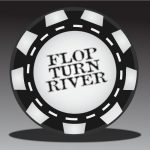FTR Quick Tip: Helping you plug leaks in 5 minutes or less.
In this installment, we talk about preflop 3-betting for value. Learn what situations are good for 3-betting for value, and in which spots you are better off just calling. By comparing our hand with our opponents’ ranges, we can determine our best play. 3-betting correctly is an essential skill that all top pros use to dominate at No Limit Hold’em poker.
Discuss this video in our Poker Forum: [FTR Quick Tip 004] 3-Betting, Part 1: Three-Betting for Value Forum Thread
Full Transcript
Hey, guys. This is Mike1013 for Flop Turn River. I’ve been thinking for a while about 3-betting, and about making a video about 3-betting, but I’ve realized that 3-betting’s such a complex subject, such a wide subject, such an opponent and situation-specific subject, that I could make a number of videos, each focusing on a specific aspect of 3-betting.
Today, I’m going to get started by talking about 3-betting for value. So, when can we 3-bet for value? Well, we have to ask ourself, how does our hand compare against the range that our opponent can continue with? This is important. It doesn’t really matter what his opening range is. His range for continuing has to be worse than our hand, otherwise our 3-bet has no value.
If we 3-bet, and only get called by hands that beat us, or mostly get called by hands that beat us, then it’s hard to see how this could, in any way, be a 3-bet for value. So, how do we determine what our opponent’s range for continuing is? As always, reads are really good, and if you’ve seen your opponent do something, and he got to showdown, and showed his cards, that’s very important, but if you don’t have those kind of reads, you can use your opponent’s PFR and Fold-to-3Bet stats to get a general idea of what his range might be.
For instance, if he’s opening or raising 20% in a certain spot, and his Fold-to-3Bet stat is 50%, then that means he’s continuing with a range of 10%, and you can judge how well your hand stacks up against that 10% range, to decide whether or not you can 3-bet for value. Now, when you have something like Aces or Kings, it’s pretty easy to tell how your hand is going to fare against your opponent’s continuing range. You crush it 99% of the time, so that’s an easy 3-bet for value, but what about spots where it’s not so clear, where it’s kind of difficult to decide if we have a 3-bet for value?
Well, I’m going to look at, perhaps, one of the classic cases of a hand, where it’s hard to know what you should do. I’m going to look at pocket Jacks. Let’s take a look at a couple of example hands here.
All right, let’s take a look at the stats that I have up here on the HUD. First number, VPIP, second number, PFR, third number is 3-bet, and in the popup there, we have Fold to 3-bet on the bottom right. Now, let’s take a look at the action here, on this 25 NL Full Ring Cash Game table. So, we get a raise and a cold call, and it’s on us with Jacks. Now, let’s take a look at these players.
The first guy, the open raiser, he looks like an aggressive fish. He has a 20% PFR, so his range is kind of wide here. Let’s take a look at his Fold to 3-bet. It’s only 8%, or 1 out of 13 times, that he’s folded to a 3-bet. I think we can safely conclude that he’s continuing with a very wide range. Then, whatever range the cold caller’s continuing with, that can only help us, as well. Let’s look at his Fold to 3-bet percent. Okay, his is only 20% over a very small sample.
Both of these players display the tendency that they like to call, they have wide ranges, so I think we’re getting a lot of value here when we 3-bet with Jacks. I did go ahead and 3-bet to four times the size of the opening raise. In general, you want to 3-bet to at least three times the size of the raise. Plus, you want to add a little bit extra for each cold caller that there is.
Let’s go to the next hand. Okay, the next hand happens at a 4 NL Cash Game, and we get a limp by a fish, and a raise by a very nitty player. It’s on us, and we have to decide what we want to do. Well, this guy, his PFR’s only 6%. Our Jacks are barely ahead of 6%. I see no reason to 3-bet here. If we 3-bet, and let’s look at his Fold to 3-bet percent. It’s 64%. Small sample, but he’s folding some of the time, or the majority of the time. If we 3-bet here, all we’re doing is narrowing his range to continue to hands that beat us. There’s no point to do this. If we 3-bet here, it’s not for value at all. Furthermore, if we 3-bet, we might lose the fish, and we want to play as many pots as possible against a 41/1 guy. So here, I think the correct play, by far, is to cold call.
You might be wondering, well, then how do we exploit a guy who’s folding so often? Well, we’ll talk about that in the next video in the series, where we’re going to be discussing 3-betting as a bluff. Until then, take care, guys.
Submit your review | |


![[FTR Quick Tip 004] 3-Betting, Part 1: Three-Betting for Value](https://flopturnriver.com/wp-content/uploads/2016/08/poker-videos.jpg)






